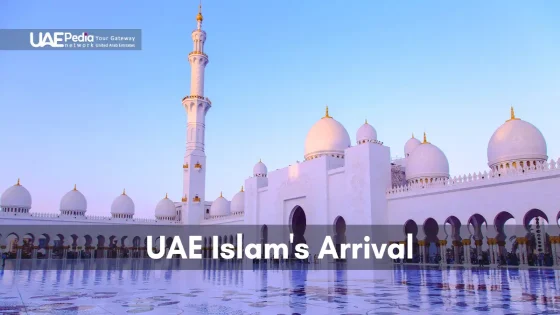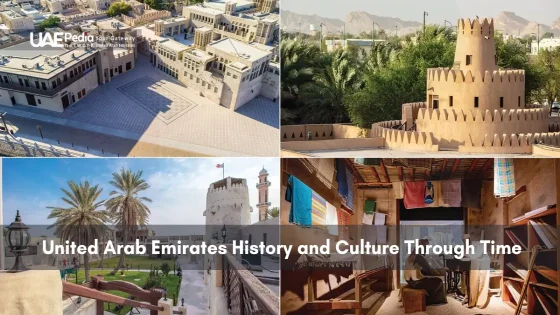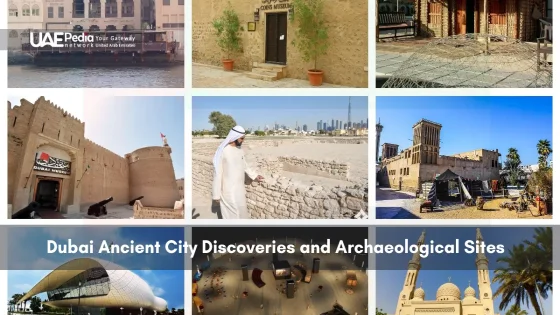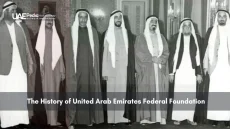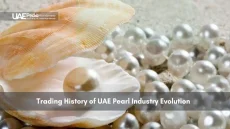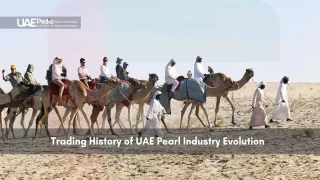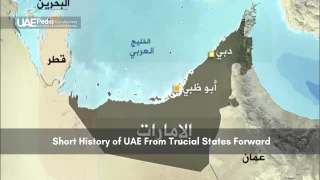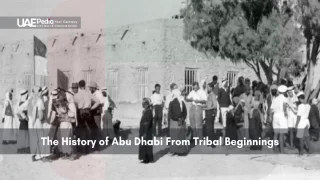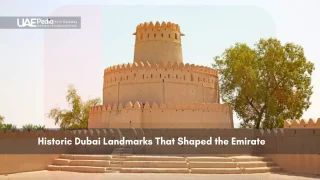Ever wondered how one faith could change a whole nation? The UAE’s story with Islam is amazing. It shows how culture and faith can grow together. Let’s see how this old religion helped shape today’s UAE.
In the early 8th century, Islam started spreading in the UAE. It quickly became the main faith. Islamic teachings helped people connect more and find their cultural identity.
The UAE’s Islamic heritage is seen everywhere. From busy markets to peaceful mosques, it’s all around. This shows how Islam has shaped the UAE.
Islam taught honesty and justice, which helped the UAE’s economy grow. Trade in pearls, spices, and more flourished. Islamic values also shaped how the UAE governs and treats others.
Events like Ramadan and Eid al-Fitr became big social events. They brought people together in faith and tradition. The UAE’s Islamic history is rich, with tribes like the Azd settling along the coast.
UAE Islam’s Arrival and Early Islamic Period
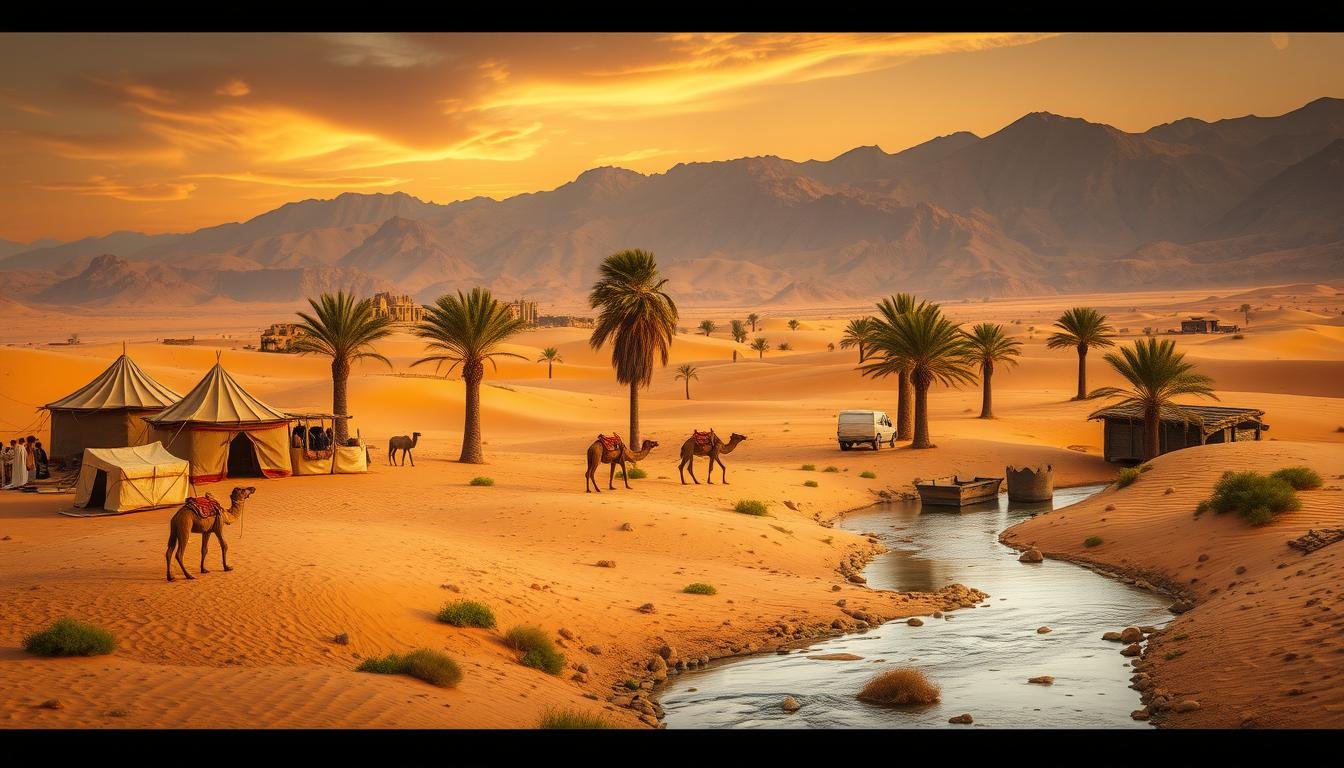
The Early Islamic period in UAE was a key time in the region’s history. Islam came in the 7th century AD. It changed the culture and society a lot. Today, 74.5% of the UAE people are Muslim.
Introduction of Islam in the 7th Century
Islam came to the UAE in the 7th century. This was a time of big changes. The area had many groups, like Christians, Zoroastrians, and Jews.
The Ridda Wars and Regional Transformation
The Ridda Wars had a big impact on the UAE. These fights happened after Prophet Muhammad died. They helped make Islam the main faith.
A key battle was at Dibba, on the UAE’s east coast. It defeated non-Muslim groups. This battle made Islamic rule strong in the area.
Establishment of Islamic Governance
Islamic rule started to grow in the UAE. Different Islamic laws spread across the emirates. The Bani Yas followed the Sunni Maliki school.
Other places followed Hanbali and Shafi’i schools. This mix helped create the UAE’s rich Islamic heritage. Sunni Muslims are about 63.3% of the Muslim population. Shia Muslims are around 6.7%.
| Muslim Denomination | Percentage of UAE Population |
|---|---|
| Sunni | 63.3% |
| Shia | 6.7% |
| Other Islamic Groups | 4.4% |
Development of Islamic Institutions and Governance
The United Arab Emirates (UAE) has a rich mix of Islamic institutions. These institutions shape the country’s governance and society. They help keep the nation’s culture alive while meeting modern needs.
Role of the General Authority of Islamic Affairs
The General Authority of Islamic Affairs and Endowments (Awqaf) is key in the UAE. It looks after Sunni mosques and helps imams. This ensures a unified message of faith across the UAE. With 76% of people Muslim, Awqaf’s role is big.
Implementation of Sharia Law
Sharia law is at the heart of the UAE’s legal system, especially for family matters of Muslims. It works alongside civil law, blending tradition with diversity. This mix is important, given the UAE’s mix of Sunni and Shia Muslims.
Evolution of Islamic Education Systems
Islamic education in the UAE has grown a lot. It’s a must in public schools for Muslim kids. Private schools serve all faiths. This shows the UAE’s dedication to faith and diversity.
| Aspect | Description | Impact |
|---|---|---|
| Awqaf | Manages Sunni mosques, guides imams | Unified religious message |
| Sharia Law | Primary source for family law | Balances tradition and modernity |
| Islamic Education | Mandatory in public schools for Muslims | Preserves Islamic values |
The UAE’s way of handling Islamic governance is a perfect mix of old and new. It supports Islamic institutions, follows Sharia law, and updates education. This way, the UAE keeps its Islamic roots while welcoming everyone.
Cultural and Architectural Heritage of Islam
The UAE’s Islamic heritage is seen in its beautiful architecture and cultural traditions. It has grand mosques and intricate art. The nation proudly shows its Islamic roots.
The Sheikh Zayed Grand Mosque Legacy
The Sheikh Zayed Grand Mosque in Abu Dhabi is a masterpiece of UAE Islamic architecture. It has 82 domes, 1,096 columns, and four minarets that reach 100 meters high. A special carpet, made over two years, covers its floors.
It’s the most-photographed building in the UAE. Visitors can enter for free every day.
Islamic Art and Calligraphy Development
Islamic art in the UAE is diverse. The Sharjah Museum of Islamic Civilization has six galleries. They show Islamic art, calligraphy, and more.
The Holy Quran Museum in Sharjah has seven themed sections. They focus on the Quran’s history and preservation.
Traditional Islamic Festivals and Celebrations
Islamic traditions shine during Ramadan and Eid al-Fitr. These festivals bring families together. They strengthen community bonds.
The UAE supports Islamic heritage. It does this through cultural events and scholarly gatherings.
| Attraction | Features | Opening Times |
|---|---|---|
| Sheikh Zayed Grand Mosque | 82 domes, 1,096 columns, 4 minarets | Sat-Thu 9am-10pm, Fri 9am-12pm |
| Sharjah Museum of Islamic Civilization | 6 galleries of Islamic art and artifacts | Sat-Thu 8am-8pm, Fri 4pm-8pm |
| Fujairah Grand Mosque | Second largest mosque, 6 minarets, 65 domes | 9am-12pm daily, except Fridays |
Modern Islamic Practice and Religious Diversity
The UAE is a shining example of religious diversity in the Middle East. It welcomes over 200 nationalities, creating a rich mix of faiths. This diversity is seen in its modern Islamic practices and efforts to bring faiths together.
Sunni and Shia Communities
Islam is the main faith in the UAE. Sunni Muslims make up most of the population. A large Shia minority adds to the Islamic mix, making the country’s faith scene unique.
Religious Tolerance and Interfaith Dialogue
The UAE promotes religious tolerance through many initiatives. The Forum for Promoting Peace in Muslim Societies and the Muslim Council of Elders push for Islamic moderation. They help faiths talk openly and understand each other better.
Contemporary Islamic Institutions
Modern Islamic practices in the UAE are backed by innovative institutions. The International Center of Excellence for Countering Violent Extremism (Hedayah) fights against extremist views. The Abrahamic Family House is another example, with a mosque, church, and synagogue under one roof. It shows the UAE’s dedication to living together peacefully.
The UAE’s way of handling religious diversity is a model for others. It welcomes different faiths while staying true to its Islamic heritage. This mix of tradition and openness makes the UAE’s religious scene special.
Conclusion
The UAE’s Islamic influence has been key since the 7th century. Islam started in Mecca and quickly spread. It changed the social, cultural, and economic scenes of the Arabian Peninsula.
The Quraysh tribe was once big in Mecca’s trade. They helped start the Islamic rules that guide the UAE today.
Islam’s mark on UAE growth is clear in all parts of society. The UAE mixes old traditions with new ideas well. This mix is seen in its laws, which follow Sharia but also support women’s rights and religious freedom.
The UAE looks to the future with a strong Islamic base. It welcomes diversity and connects with the world. This is shown in its growing economy and support for women in business.
The UAE is ready for the 21st century while keeping its Islamic values. This mix of faith and progress will keep shaping the UAE for years.
